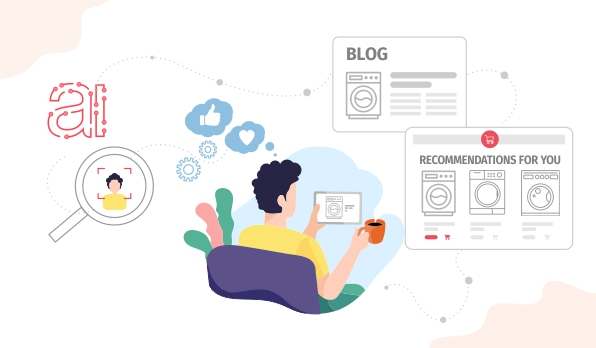In today’s hyper-connected world, users no longer want static, one-size-fits-all experiences. They expect websites to adapt to them—instantly. Thanks to advancements in AI, data analytics, and 5G connectivity, real-time personalization is no longer a luxury reserved for tech giants. In 2025, it’s becoming the norm for Australian businesses of all sizes.
From ecommerce stores adjusting product recommendations on the fly, to news sites curating headlines based on your location, real-time personalization on Australian websites is changing how users interact with digital content. It’s making experiences faster, smarter, and a whole lot more human.
In this article, we’ll dive deep into how real-time personalization is being implemented across Australian websites, why it’s becoming essential for UX success, and how brands are balancing personalization with user trust and data privacy.
Let’s explore the fascinating future of real-time personalization in Australian web design.
What Is Real-Time Personalization?

Let’s start with a simple definition.
Real-time personalization means adjusting the website’s content, structure, or features instantly based on:
- User behavior (clicks, scrolls, searches)
- Location data
- Device type
- Browsing history
- Purchase history
- Preferences the user shares voluntarily
- External data (like weather or trending events)
Instead of creating one static website for all visitors, real-time personalization lets you create millions of micro-experiences, tailored on the fly.
It’s not just showing someone their name in a banner. It’s about reshaping entire digital journeys based on who’s visiting.
And in 2025, Australian users are starting to expect it.
Why Real-Time Personalization Matters More in 2025
There are several big reasons why personalization is no longer optional:
1. Attention Spans Are Shrinking
If your site doesn’t show users relevant information immediately, they’ll bounce. Personalization keeps content laser-focused.
2. Competition Is Fierce
With more choices online, users are loyal to brands that “get” them—without making them work for it.
3. Data Is Abundant
With smarter data platforms, businesses have more real-time insight into user behavior than ever before.
4. 5G Connectivity Enables Speed
Instant loading and real-time server communication allow for dynamic experiences without noticeable delays.
5. AI Is Mature
AI models can now predict user needs far more accurately and with less human setup.
In short, real-time personalization is quickly becoming the new standard for good UX.
How Australian Websites Are Using Real-Time Personalization

Across Australia, innovative brands are putting personalization into action in amazing ways. Let’s explore how they’re doing it:
1. Dynamic Content Recommendations
Ecommerce sites like The Iconic and Adore Beauty are serving up real-time product recommendations based on:
- What users browsed recently
- What’s trending nearby
- Previous purchase behavior
This keeps users engaged longer—and significantly boosts conversion rates.
2. Location-Based Personalization
Retailers and service providers are personalizing experiences based on a user’s real-time location.
Example:
- Bunnings shows different promotions depending on the user’s nearest store.
- Qantas dynamically updates travel offers based on your departure city.
This makes content feel locally relevant, which users love.
3. Real-Time Search Optimization
Australian news sites like ABC News and SBS adjust their homepages and top search results based on:
- Current trending topics
- Geolocation
- Time of day (e.g., lighter content in the evening)
This ensures the content feels fresh and important every time a user visits.
4. Weather-Responsive Interfaces
Some Australian brands are using weather APIs to personalize experiences.
Example:
- Surf gear websites like SurfStitch suggest wetsuits during colder weather automatically.
- Travel sites promote “rainy weekend getaway” deals when storms hit Sydney.
Contextual personalization like this makes promotions feel helpful, not spammy.
5. Real-Time Form Adaptation
Insurance, finance, and education sites are adapting form fields on the fly based on user answers.
Example:
- If a user selects “self-employed” on a loan form, subsequent fields adjust to ask for different financial details.
This reduces friction, speeds up completion rates, and makes forms feel smarter.
Key Benefits of Real-Time Personalization
When done well, personalization creates massive value for both businesses and users.
For users:
- Faster journeys to the right content
- Less cognitive overload from irrelevant options
- Higher satisfaction with the brand
- Stronger emotional connection (“they understand me”)
For businesses:
- Higher engagement rates
- Better conversion rates
- Increased customer loyalty
- More data for future improvements
It’s a true win-win—if personalization is handled responsibly.
Challenges and Risks of Personalization
Of course, personalization isn’t all sunshine and rainbows. Some risks include:
- Data privacy concerns: Users are more wary than ever about how their data is collected and used.
- Creepy factor: Overly aggressive personalization can feel invasive (“How do they know that?!”).
- Bias and exclusion: Poorly trained AI can unintentionally reinforce stereotypes or exclude minority users.
- Technical debt: Real-time systems require fast, reliable backend architecture—and bad infrastructure shows fast.
In Australia, with increasing attention on privacy laws (like the Privacy Act Review), designers and marketers must balance personalization with transparency and consent.
Best Practices for Ethical Real-Time Personalization
If you’re designing real-time personalization in 2025, here’s how to do it right:
- Ask for permission clearly: Let users opt-in to personalized experiences.
- Explain why personalization improves UX: Frame it as a benefit, not a data grab.
- Give users control: Allow them to adjust personalization settings easily.
- Use data responsibly: Only collect what you truly need—and protect it well.
- Start small: Personalize one or two impactful elements first (like search results), then expand.
Above all: personalization should feel helpful, not intrusive.
Tools Powering Real-Time Personalization
Australian brands are using a range of tools to power these experiences:
- Adobe Target: Real-time A/B testing and AI-powered personalization.
- Optimizely: Dynamic content targeting based on behavior and attributes.
- Salesforce Interaction Studio: Real-time journey mapping and user segmentation.
- Custom APIs: Integrating real-time weather, location, and event data for contextual UX.
And with faster 5G connections, latency issues that once limited real-time updates are disappearing fast.
Future Trends: Where Personalization Is Headed

Looking beyond 2025, real-time personalization in Australia is heading toward:
- Hyper-localization: Personalizing based on micro-neighborhoods, not just cities.
- Emotion-driven adaptation: Adjusting UI tone based on real-time mood detection via device signals (with consent).
- Cross-device continuity: Pick up where you left off seamlessly between phone, laptop, car, or TV apps.
- Dynamic accessibility personalization: Instantly adapting contrast, font size, and interaction methods for users with disabilities.
Imagine a website that feels different depending on whether you’re tired, energetic, rushing, or relaxing.
That’s the future designers are building today.
FAQs
1. What is real-time personalization?
It’s when websites adapt their content, layout, or features instantly based on user behavior, preferences, or external factors.
2. Why is personalization important for Australian websites in 2025?
Users expect faster, more relevant experiences—and competition for attention is fierce across every industry.
3. Is personalization safe for user privacy?
It can be, if brands are transparent, get consent, minimize data collection, and provide user controls.
4. How do you start implementing personalization?
Begin small: personalize recommendations, headlines, or call-to-actions based on behavior or location.
5. Does real-time personalization require expensive AI?
Not necessarily—many platforms like Adobe, Salesforce, and Optimizely offer accessible real-time personalization solutions.










